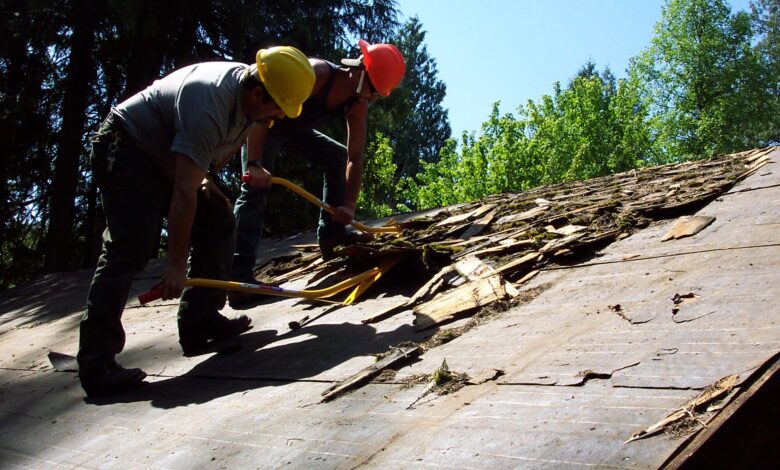
Dealing with rotted wood on your roof can feel overwhelming, but taking action quickly with proper roof repair can prevent further damage and costly repairs. If you’ve noticed signs of wood rot, understanding the causes, identifying the damage, and knowing how to fix it are essential steps in maintaining your home’s structural integrity.
What Causes Roof Rot?
Roof rot, often caused by excess moisture, is a common issue for homeowners. When water infiltrates wooden parts of your roof, it creates the perfect environment for fungi to grow, leading to decay. Common causes include:
- Poor Ventilation: Improper airflow can trap moisture in your attic, leading to condensation and wood rot.
- Leaks: Damaged shingles, cracked flashing, or worn seals can let water seep into the roof structure.
- Clogged Gutters: When gutters are blocked, water can overflow and soak the roof’s edge.
- Weather Exposure: Continuous rain, snow, or humidity without adequate protection accelerates rot.
Signs of Roof Rot
Recognizing roof rot early can save you from extensive damage. Keep an eye out for these signs:
- Sagging Roof: A noticeable dip in your roofline often indicates weakened structural support.
- Mold or Mildew: Visible mold growth or a musty odor in the attic can be a red flag.
- Soft or Spongy Wood: Wood that feels soft when pressed is likely rotted.
- Discolored or Cracked Wood: Darkened, brittle wood with visible cracks is a common indicator.
Step-by-Step Guide to Replacing Rotted Wood on Your Roof
If you’re confident in your DIY skills, follow these steps to replace the rotted wood and restore your roof’s strength.
1. Inspect and Assess the Damage
- Begin by inspecting the roof for visible signs of rot.
- Use a screwdriver to gently probe the wood; if it easily punctures or crumbles, the wood is rotted.
- Identify the extent of the damage to determine whether a small repair or a larger replacement is needed.
2. Remove the Rotted Wood
- Using a saw or chisel, carefully cut out the damaged sections of wood.
- Remove any nearby materials that may also be compromised.
- Dispose of the rotted wood properly to prevent fungal spores from spreading.
3. Treat the Area
- Before installing new wood, apply a fungicide or wood preservative to the exposed areas to kill any remaining spores.
- Ensure the surrounding wood is dry and free from moisture.
4. Replace with New Wood
- Choose pressure-treated lumber or a naturally rot-resistant wood like cedar.
- Cut the new wood to fit the removed section precisely.
- Secure it with galvanized nails or screws to prevent rusting.
5. Reinforce for Structural Support
- If the damage compromised the roof’s integrity, consider installing additional support beams.
- Use metal brackets or sister beams for extra reinforcement.
6. Waterproof and Seal
- Apply a waterproof sealant to protect the new wood.
- Ensure the roof’s flashing is intact and reseal any vulnerable joints.
- Replace any shingles, tiles, or roofing materials that were removed.
Preventing Future Wood Rot
Preventative maintenance is key to avoiding roof rot in the future. Here are some tips to keep your roof in good shape:
- Ensure Proper Ventilation: Install ridge vents, soffit vents, or attic fans to promote airflow.
- Clean Gutters Regularly: Clear leaves and debris to prevent water buildup.
- Inspect After Storms: Check for damaged shingles or leaks following heavy rain or wind.
- Schedule Annual Inspections: Hire a roofing professional to conduct regular inspections and address issues early.
By taking these steps, you can keep your roof strong and protected for years to come. If the damage is extensive or you’re unsure about the repair process, don’t hesitate to contact a professional roofer for assistance. Keeping your roof well-maintained ensures your home stays safe, dry, and free from rot-related issues.